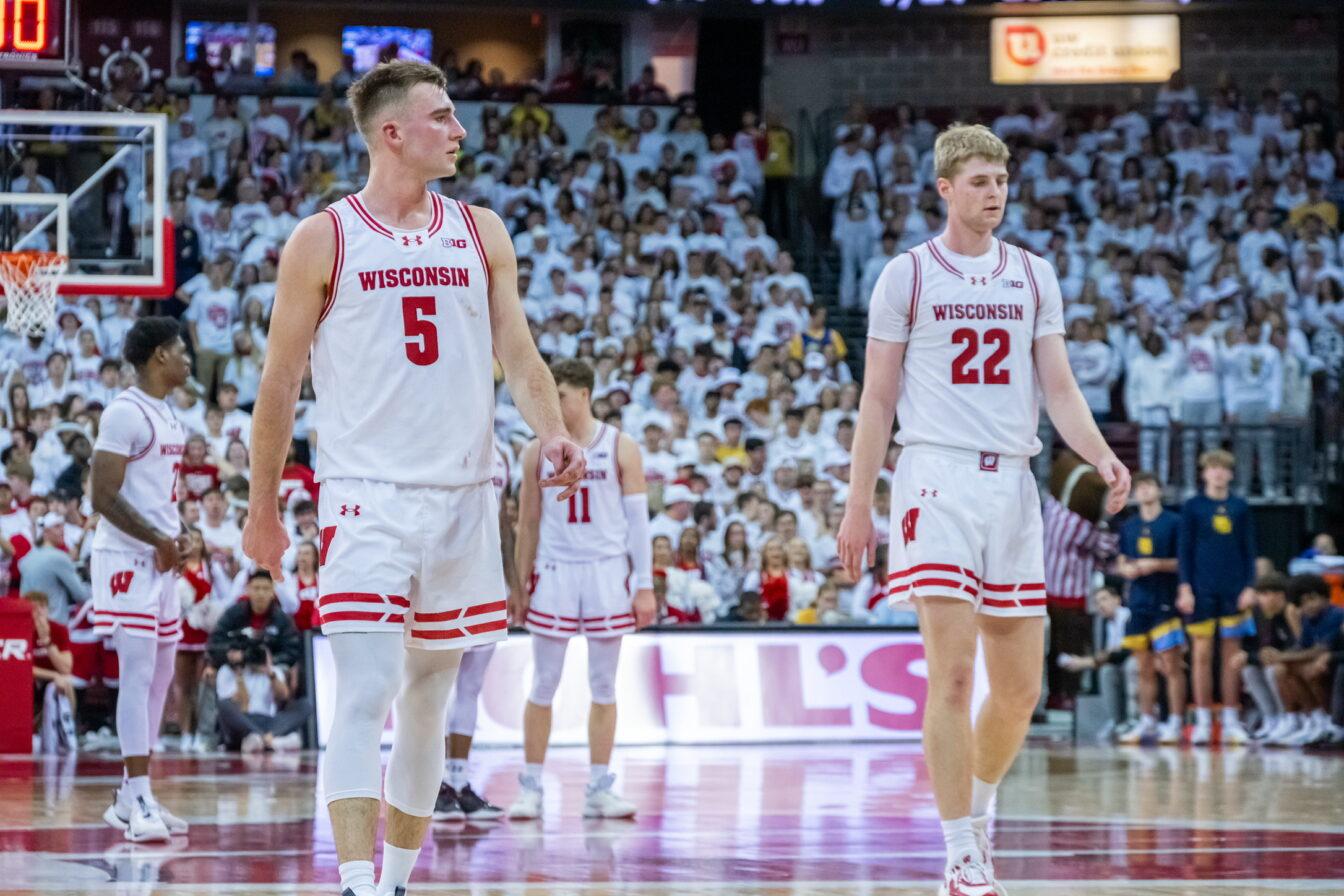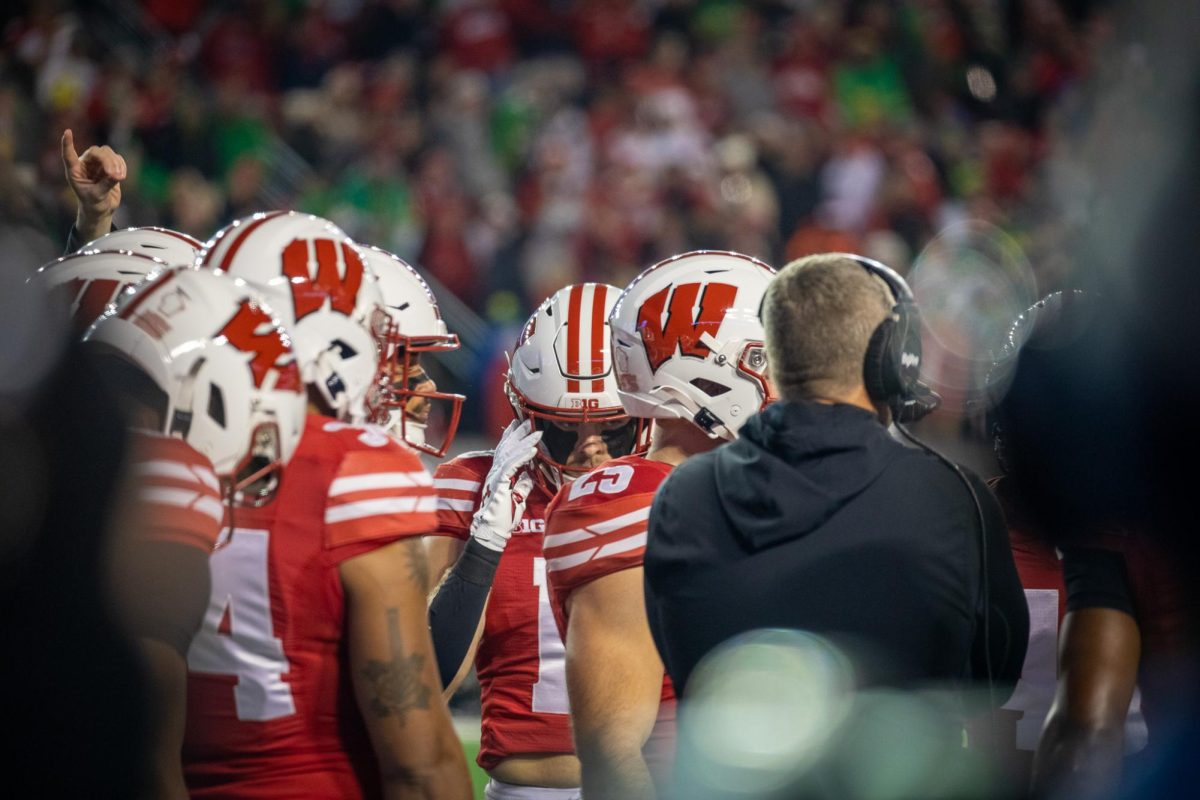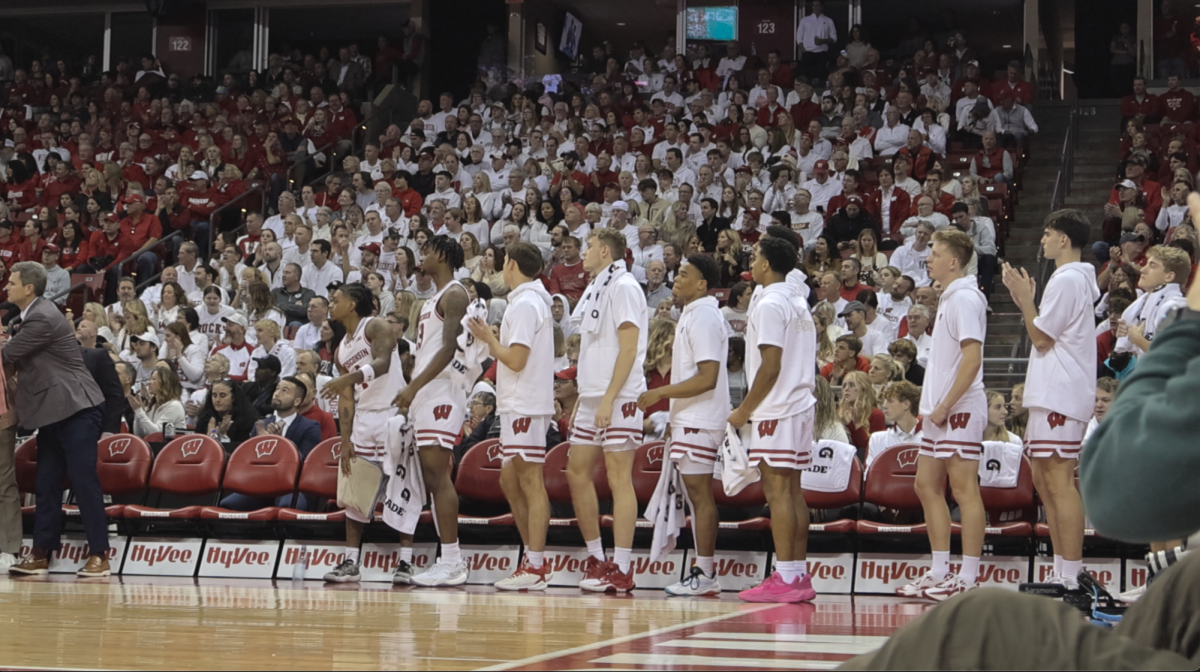Coming into the season, I decided anything around a .500 record would be about par for the men’s hockey team. The Badgers lost four 50-point scorers, seven seniors and four very talented underclassmen who bolted for the pros.
After watching a high-flying offense rip off four goals per game in 2009-10, this season looked like it would be a return to the norm for Wisconsin: Get solid goaltending and hope to score just one more than the opponent.
It was supposed to be a rebuilding year, a season in which the young talent would gain some experience, and not much else.
Apparently, Mike Eaves’ crew didn’t get the memo.
Wisconsin sits at 15-8-3 right now, and went on a seven-game winning streak between December and January. The Badgers score 3.46 goals per game (12th in the nation) while allowing just 2.08 (fourth). They sit at fourth in scoring margin, with a 1.38 mark, which is notable because last season’s top four in that category also happened to be comprised of the teams that played in the Frozen Four.
Most of the Badgers’ tough games are behind them: A split with Minnesota-Duluth this past weekend marked one of just two 2011 series that loomed for UW, the other being a trip to Nebraska-Omaha.
Wisconsin sits in a similar position as it was last season, but with a very dissimilar group of players. The Badgers, as of now, would make the NCAA tournament, likely as a No. 3 seed.
The question still remains, though: With 12 regular-season games left, can these guys actually make a run?
The good
As mentioned before, the Badgers, on average, outscore their opponents by a goal and a half. In all games played, they’ve scored the most goals of any WCHA team and allowed the fewest. The conference’s best teams, North Dakota, Denver and Minnesota-Duluth, are in the rear-view mirror.
Part of that is the continued excellence of Wisconsin’s defensemen. UW’s top pair of junior Jake Gardiner and sophomore Justin Schultz are plus-18 and plus-12, respectively. They also rank first and fourth in the nation, respectively, in blue line scoring. With 14 goals and 18 assists, Schultz leads all defensemen in goals and total points.
Meanwhile, veterans Eric Springer and Craig Johnson have been steady, while sophomore John Ramage continues to get better. Freshmen Frankie Simonelli and Joe Faust have proven themselves reliable.
Up front, sophomore Craig Smith has already gone 14-19-33, on pace to shatter his 8-25-33 mark from last season. Freshman Mark Zengerle (3-25-28) and junior Jordy Murray (13-6-19) have joined Smith to form a formidable top line.
Most impressive might be the play of senior Scott Gudmandson, who has improved his numbers from last season, despite playing with a less talented and less experienced group in front of him. Gudmandson’s 1.79 goals-against average and .932 save percentage both lead the WCHA.
Gudmandson has shown the ability to stand on his head in big games and was the only reason a 1-0 November loss to North Dakota wasn’t a 6-0 loss.
And while the Badgers may be young, they have begun to show maturity, digging out of a few recent early deficits. Maybe more importantly was UW’s first overtime win since March of 2007, in a 6-5 victory over Canisius two weeks ago. Wisconsin had been 0-8-18 in overtime until that win.
While UW can be criticized for allowing Canisius to turn a 3-0 deficit into a 5-4 lead, the Badgers never panicked, and showed toughness in finishing the game out, the kind of experience that will only help in the future.
The bad
While Wisconsin’s overall record is solid, the Badgers are just 7-7-2 in league play, and tied for fifth place.
The main knock on the Badgers is the disparity in their performance against good teams and bad teams. UW is just 1-6-1 against UND, UMD and DU, the top teams in the conference. The majority of Wisconsin’s wins have come against the Holy Crosses and Alabama-Huntsvilles of the world.
Another item of concern is the Badgers’ top-heavy distribution of scoring. UW’s top line and top defensive pair – Smith, Murray, Zengerle, Schultz and Gardiner, also Wisconsin’s top power-play unit – have accounted for 49 of UW’s 90 goals and 138 of 251 total points.
UW’s second line of Michael Mersch, Podge Turnbull and Tyler Barnes are a combined 20-17-37. Beyond the aforementioned eight players, the Badgers get contributions here and there from the rest of the players.
A final worry? Wisconsin still scores about 39 percent of its goals on the power play. Thirty-five of 90 UW goals have come with the man-advantage. For comparison, last year’s group scored only about 30 percent of its total goals on the power play.
Executing with the man-advantage is great. Relying on the power play to provide offense is a much less sustainable model of success.
The verdict
Wisconsin has a very manageable finish to its regular season. Its remaining opponents (Minnesota State, Michigan Tech, Nebraska-Omaha, Minnesota, St. Cloud State and Colorado College) are a combined 56-64-16, with half of the games coming at the Kohl Center.
Should UW take care of business as expected, it could grab home ice for the first round of the WCHA playoffs and get to the Final Five. North Dakota is by far the favorite to win the conference, but the Badgers should get an at-large bid to the tournament and win a game. Don’t expect a repeat of last season, but don’t completely close the door on the possibility either.
Adam is a senior majoring in journalism. How far can these young Badgers go? Email him at [email protected] or Tweet @AdamJSHolt.













